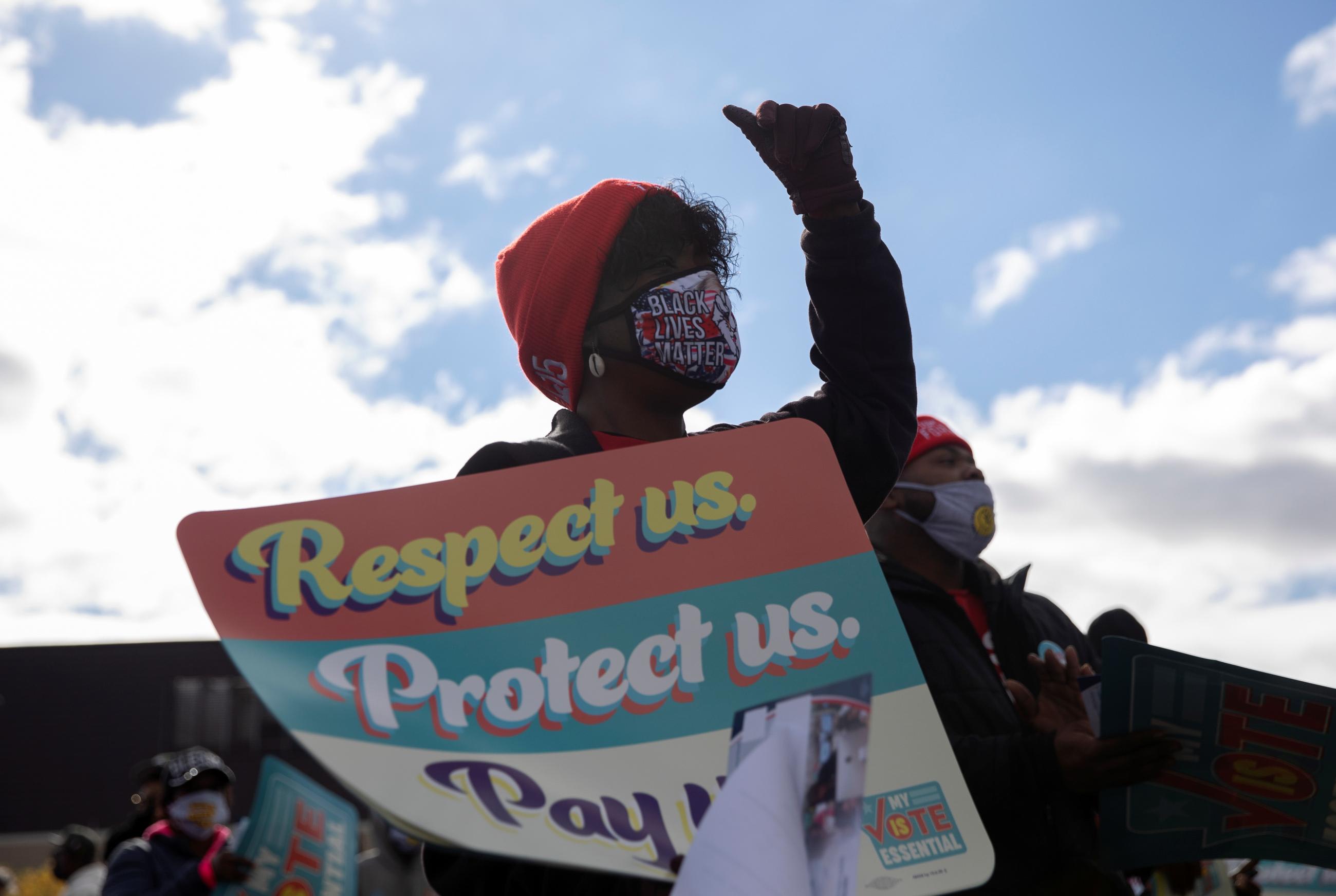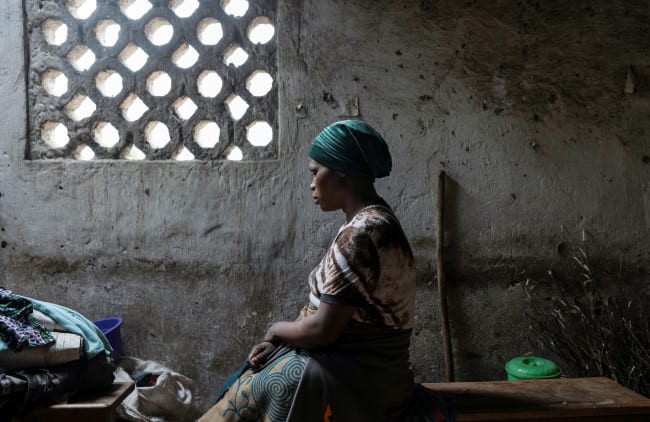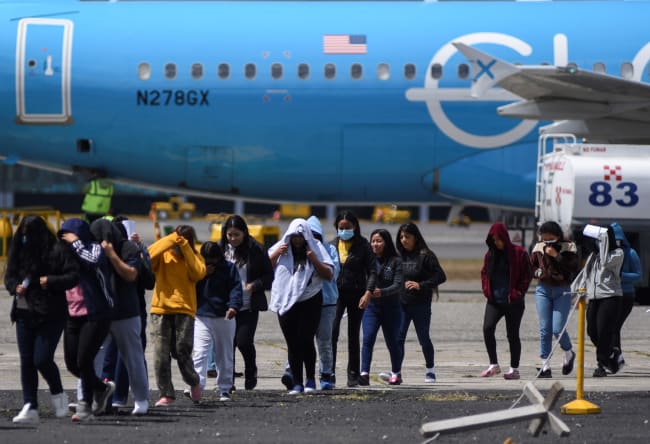America has been the perennial beacon of hope and opportunity for countless people around the world who dream of a better life. It beckons with the alluring promise that success and prosperity are attainable through perseverance and tenacity, regardless of one's roots. The stories of the immigrants who accept that call have long been woven into the fabric of U.S. history.
When I got into a cab in Chicago, I had no idea I would learn the story of Aleta, a spirited twenty-eight-year-old from Ghana, one of the many individuals swayed by the American Dream.
Embarking On a Dream
Aleta told me that when she moved from Ghana to the bustling streets of New York, she had a clear vision of what she was pursuing: a quality nursing education, the foundation for a fulfilling career, and perhaps a family in this foreign land. Her uncle reassured her that, after working three years to accumulate the necessary savings, she would be able to enroll in a nursing school. True to her aspirations, she found her way to a nursing school in Oklahoma City—at which point the unanticipated onslaught of COVID-19 drastically altered her course.
The stories of the immigrants who accept that call have long been woven into the fabric of American history
The pandemic exposed stark inequalities, and people with fewer resources bore the brunt, in particular people of color. Like many others, Aleta felt her trajectory begin to falter as hurdles multiplied: she lost employment, found it difficult to get around, and struggled to balance her studies with everyday survival. Initially intending to earn a bachelor's degree in nursing, she found herself compelled by the hurdles raised by COVID-19 to end her academic journey prematurely, securing an associate degree instead. Although she did benefit from federal assistance, what she received was a mere drop in the bucket of her needs. She ultimately sought refuge in Chicago. In the city, renowned for its expansive health-care sector and higher employment opportunities, she hoped her associate degree could be a ticket to better prospects.
In early 2021, Aleta landed a nursing job on the northside of Chicago, a testament to her skills and determination. Yet the financial realities of the northside, with its elevated living costs, presented a stark contrast to her paycheck. Thus she opted to settle in the south side. Life there, though, was far from easy.
Despair was palpable on every street corner. "Men, women, kids, the elderly—everyone's out in the streets. They have no home, no employment. They spend their days aimlessly wandering near public spaces," she told me. For Aleta, these weren't just observations—they were reflections of her own life. The social determinants of health—conditions influencing well-being based on environment, living conditions, and socioeconomic status—weren't just theoretical constructs for her. Her housing situation, her commute, and the surrounding environment all affected her mental and physical well-being. The University of Chicago Medicine's Community Health Needs Assessment 2021–2022 sheds light on this grim reality: more than 76 percent of the south side's residents are Black and 21 percent are Hispanic. An alarming 26.7 percent live below the poverty line, starkly higher than the state's 17 percent.

Confronting Structural Inequities
On getting a job in a nursing facility, Aleta confronted a harsh reality. The work was immensely demanding: although her initial mandate was to manage ten patients, within two months this number ballooned to twenty-six as the pandemic deepened. A staggering 94 percent of nursing homes were grappling with dire staffing shortages in 2021, according to a survey of fourteen thousand facilities conducted by the American Health Care Association and National Center for Assisted Living.
Nursing assistants like her, who do everything from daily chores to physically taxing tasks, are often stretched to their limits. Eight in ten residential long-term care workers are women, according to a report from the Economic Policy Institute. The industry relies on minorities and immigrants, too: Black women make up 22 percent of this industry compared with 6.5 percent of the overall workforce, and immigrant women about 13 percent compared with 7 percent. The median salary is $15.22 per hour, 25 percent lower than that of the overall workforce.
Aleta's experience was compounded by experiences of racial prejudice. She said patients made derogatory remarks about her color and origins, critiqued her accent, and questioned her understanding of American values. She alerted her higher-ups, but they didn't resolve the problem. Ultimately, Aleta chose to leave the job, which reflects the challenges immigrants must often face, where skill and merit are overshadowed by systemic biases.
Black women make up 22 percent of the long term care worker industry
The ordeal taxed her physically and mentally, and she fell sick with a back injury. After a brief hospitalization, Aleta found herself with a staggering $31,000 medical bill. Without a job or health insurance, this debt became another mountain to climb. "I don't even know how to begin settling this," she told me, echoing the desolation countless others feel in a system that prioritizes profit over patients.
The Road Ahead
Today, Aleta navigates Chicago as a carshare driver, displaying the resilience that many immigrants possess as they continually adapt to shifting adversities. When she dropped me off, her parting words were, "Life is hard, my friend. Be well."
Understanding how America's long-term caregivers are undervalued means acknowledging how the field is shaped by sexism and racism. Historically, women of color have been cornered into caregiving roles—a legacy tracing from slavery to modern times. Biases continue to mold the industry's structure, policies, and how it is treated by legislators.
Aleta's story is emblematic of the systemic hurdles many immigrant women face. Despite America's promise of equal opportunities, many grapple with racial prejudices, economic challenges, and health-care inequities. The question looms: does the American Dream truly stand unbiased and unblemished for all?













